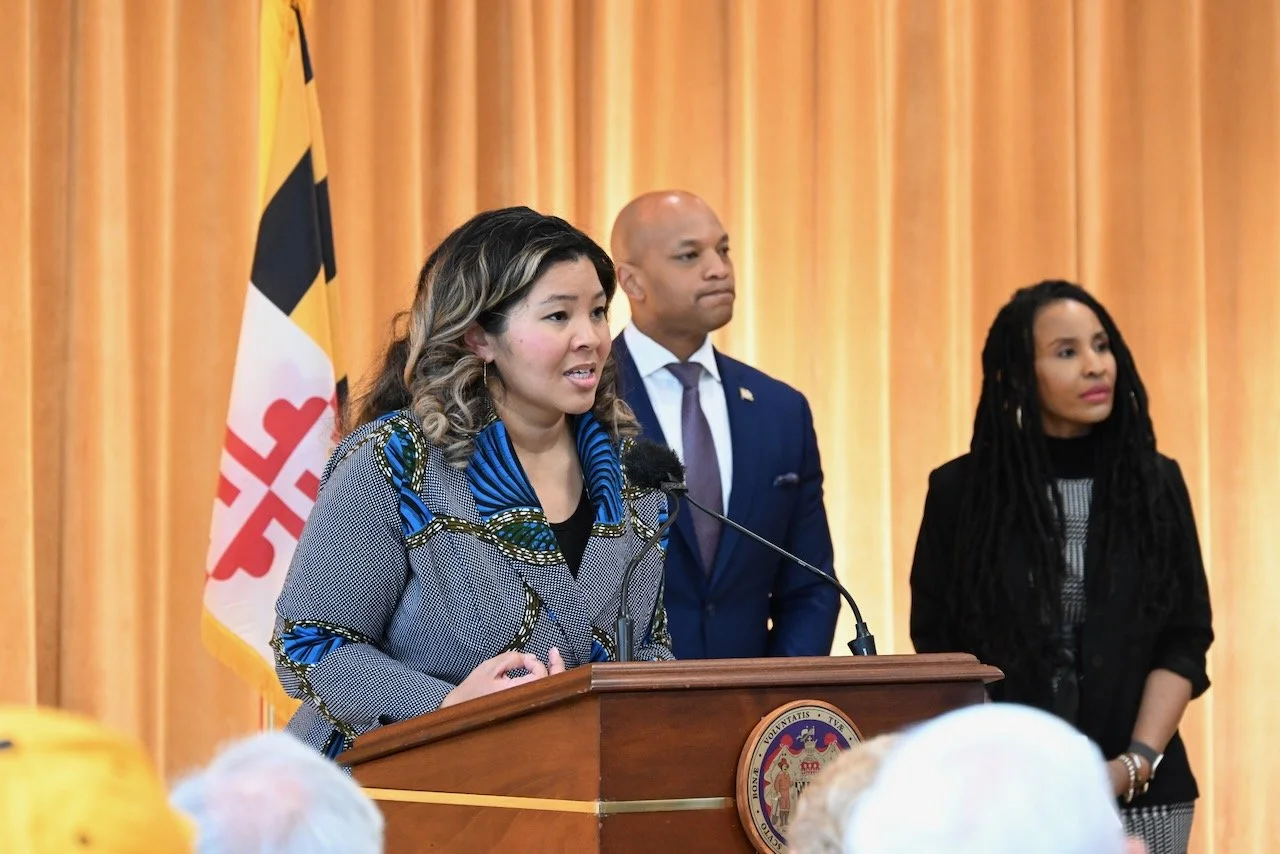Kiah Williams: Getting unused Rx drugs to people who need them
Photo courtesy of the Maryland Office of the Governor
Kiah Williams is a social entrepreneur on a mission to solve one of America’s biggest problems: $11 billion worth of medicine is thrown away each year, while 1 in 4 Americans facing unaffordable prescription costs. Williams saw a way to solve both of those issues in an equitable way. She and her two co-founders started SIRUM as undergraduates at Stanford University, and now, a decade later, it’s the nation’s largest redistributor of surplus medicine, getting more than $300 million of medicine into the hands of 800,000 patients in need so far. Her ultimate goal—to reduce the prices of all drugs for everyone—is even more ambitious.
Where did you first get the idea for SIRUM, and what gave you the confidence to go after such an ambitious project?
My co-founder Adam [Kircher] actually came up with the idea for SIRUM, inspired by what he saw overseas after a massive tsunami in Indonesia: Tons of donated supplies were going unused because they had no way of getting to the people and communities who needed them.
It turns out that there was a similar problem happening right here in the U.S. Perfectly good medicine was going unused, with no way of getting to the millions of patients whose prescription costs were prohibitively high.
This is a massive injustice. We didn’t think we had all the answers, but we all believed that it was unacceptable not to try to solve it. If no one else was solving it, why not us? We knew it wasn’t going to be easy, but we thought it just might be possible.
What role did Stanford University play in incubating the business for you and your two co-founders?
SIRUM started as a Stanford student group and then, eventually, a nights-and-weekends passion project after Adam, me, and our other co-founder, George [Wang] graduated. Being at a place that valued bold ideas gave us the early scaffolding to launch something as ambitious as SIRUM, as well as the advice and resources (like literal office space) provided by various mentors on campus. It was a few years before we really felt like we were onto something big and took the plunge to work on SIRUM full-time.
You’ve attracted a lot of positive attention from the media and key funders. Was there one moment when you said, Holy cow, I think we can do this!?
I’ll never forget matching our first medicine donor with our first community partner. It happened right near Stanford in Santa Clara County, where we helped a nursing home send its surplus medicine to a free, county-run pharmacy. After many, many months of sweating the details, this was proof that our idea could actually work. Real medicine could get to real patients. We started small, but this partnership ended up being a core principle of ours. We work with other organizations because we can’t do this alone.
Redistributing surplus medicine is such a huge disruption in the healthcare industry. You must have run into a lot of resistance. What were the main challenges, and who did you need to bring to the table to create the solutions?
One good thing about SIRUM’s work is that basically everyone agrees that people should be able to get the medicine they need to be healthy. Our work to redistribute surplus that already exists in the healthcare system—from facilities ordering too much to patients changing medications or getting discharged—is a common-sense solution. But an early challenge can be building trust in our solution: People, including potential donors or patients or even policymakers, often ask how this can be done safely and legally. We’ve become national drug donation experts over the years, and we operate under Good Samaritan drug donation laws that already exist in more than 40 states.
Where has your funding come from, and how might you be impacted by changing federal guidelines regarding the drug approval process?
Our funding has come from a mix of philanthropy (funders who believe in healthcare access as a basic right) as well as earned revenue. SIRUM operates a home delivery pharmacy, Good Pill, that is powered by donated medicine and offers 600+ medications, mostly for $2/month. As for federal guidelines, SIRUM isn’t involved in the drug approval process directly, but we track the regulatory and policy landscape around medicine broadly.
So far, you’ve helped more than 800,000 uninsured and underinsured patients get access to life-saving medicine. What is your strategy for scaling so you can reach even more patients?
Right now, Good Pill operates in three states and our goal is to go nationwide so we can serve patients anywhere. We also want to expand to provide more types of medicine, especially specialty medicines for conditions like cancer, which are often the most expensive.
Thinking even bigger, we want to leverage SIRUM’s unique knowledge of the drug space and bring more visibility into the opaque world of drug pricing—driving broader systems change. Our end goal is that no patient in America should have to skip medicine because of cost, and no good medicine should go to waste.
Now that you’ve figured out a model to capture a valuable surplus resource and distribute it to people in need, are there other industries where you see this model working?
Definitely. The idea of transforming “waste” into access has broad applications, and you can already see it at work in industries like food. What makes SIRUM unique is that we built the systems and safeguards to do this in one of the most highly regulated industries. If we can do it with medicine, it opens the imagination for what’s possible in other sectors too.
Want to learn more? Kiah’s TED Talk has more than 1.5 million views, and in this Ted-Ed animation video, Kiah explains why prescription drugs are so expensive and what can be done to address the problem.



